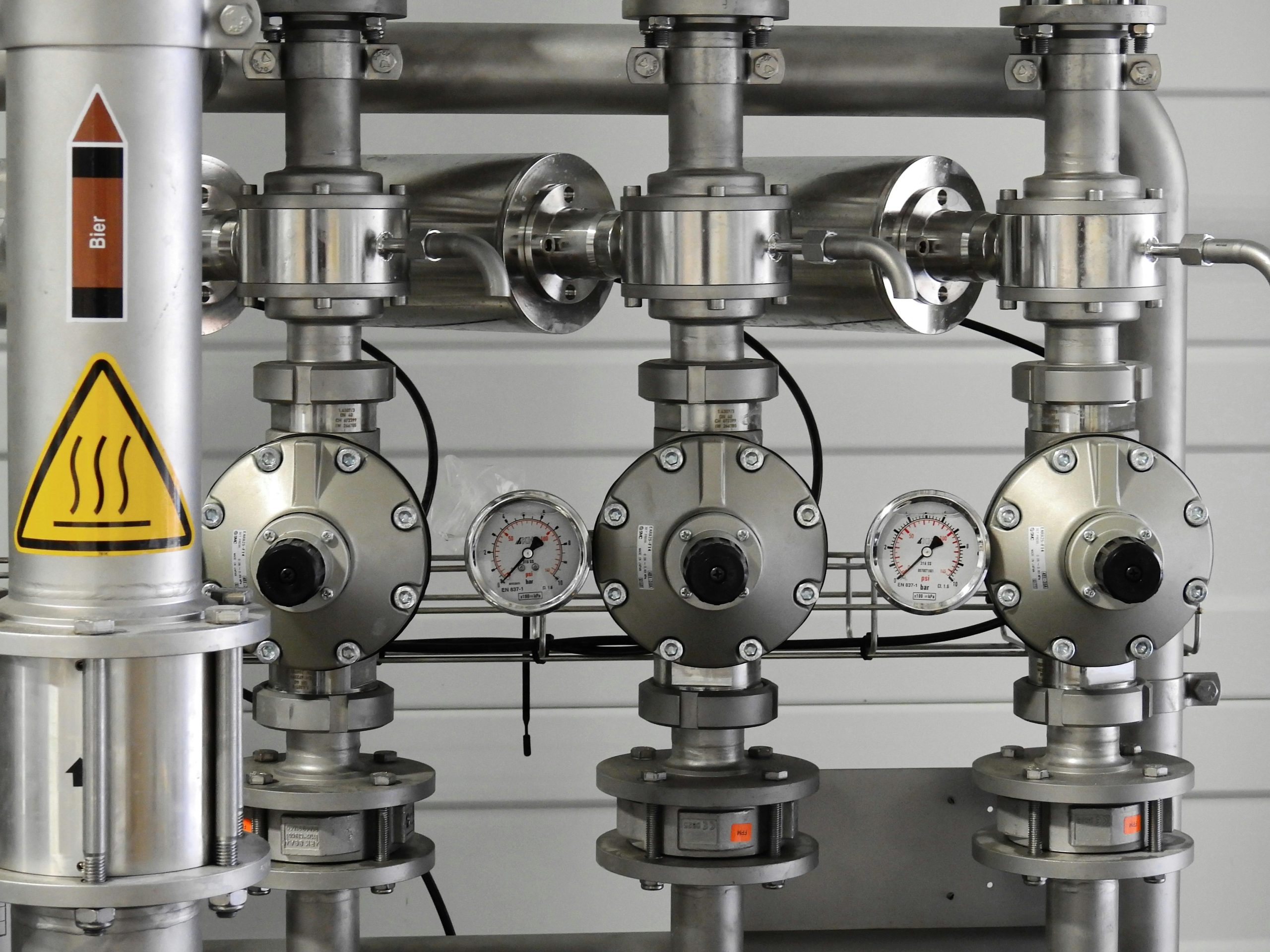The CSCS HVACR Heating and Plumbing Services Category 23 exam tests your knowledge of health, safety, and environment practices specific to working in the heating, ventilation, air conditioning, refrigeration, and plumbing trades in the UK construction industry.
After reading this, please take our free CSCS Heating and Plumbing Services mock exam questions.
Passing this exam is required to obtain the CSCS HVACR Heating and Plumbing Services card, which demonstrates to employers that you have the appropriate training and qualifications to work on construction sites safely.
Isolation and Locking Off
- Know that the recommended way to leave a newly installed plant before commissioning is to lock off all valves and switches to prevent unauthorised operation.
- Only qualified Gas Safe registered engineers can work on gas installations and attach fittings to isolated gas pipes.
- Implement a permit to work system to control access when working in confined spaces like risers.
Electrical Safety
- Mark any defective electrical items like plugs with colored wires protruding and follow the company’s protocols for handling.
- Position extension leads to avoid tripping hazards on site.
- Do not attempt temporary wiring modifications yourself – cease work until an authorised electrical supply is set up.
- Battery-operated tools don’t require portable appliance testing (PAT).
- Perform temporary continuity bonding before replacing metallic pipework sections to ensure grounding.
- Use battery-powered tools in wet outdoor conditions to eliminate electrical shock risks.
- Use cable tracers to detect live wires before drilling into walls.
Gas Safety
- Store LPG cylinders outside cabins/buildings and position them at least 3m away from oxygen cylinders in a secure, restricted access area.
- For indoor generator use, ensure the engine exhaust vents outside the building.
Incident Response
- For oil/chemical spills, secure the area and notify your supervisor rather than attempting cleanup without proper materials.
Personal Protective Equipment
- Wear eye protection when drilling through walls at all times.
- For hammer drilling large holes in brick walls, use ear defenders, dust masks, safety boots, and goggles.
Hazardous Conditions
- Wear gloves and refer to COSHH assessments when using pipe freezing equipment.
- Report any potentially fatal gas fittings to the Health and Safety Executive.
- Use protective screens when welding activities are occurring nearby to avoid welding flash exposure.
Hot Works
- Have a fire extinguisher readily available in the immediate work area when using blowtorches.
- Discontinue blowtorch use at least 1 hour before finishing hot works.
- Remove flexible pipe lagging at least 1m on each side when working with blowtorches nearby.
- Use non-flammable mats and fire extinguishers when blowtorch work is near timber.
Legionella
- Legionella bacteria causing Legionnaires’ disease proliferate in stagnant water sources like underused showers.
- Legionella transmits through inhalation of contaminated water droplets/mists.
Lifting Operations
- Refer to written method statements to confirm the sequence of operations for safe lifts.
- Never exceed the maximum safe working load (SWL) displayed on lifting equipment.
Transportation
- Use proper ladder clamps and pipe racks to transport long ladders and pipes on vehicles.
- For heavy objects like boilers, use trolleys or manual handling aids instead of lifting/dragging.
Working at Height
- If possible, carry out work under suspended floors from outside the area.
- Properly secure ladders to prevent sliding/movement before use.
- Fully extend the restraint mechanisms on stepladders for stability.
- Follow manufacturer guidance on the recommended height for freestanding mobile towers.
- Ensure the access hatch is closed after ascending mobile towers.
- Evacuate personnel and equipment from the platform before relocating mobile towers.
- Conduct risk assessments before initiating roofing work and use proper edge protection.
- Be wary of overhead service cables when constructing mobile towers.
- Use folding stepladders only for short-term tasks if no other equipment is available per risk assessments.
- For chimney flue liner installation, use an access scaffold designed for that purpose.
- For exterior work like drilling boiler flue holes, use a mobile tower or fixed scaffold as the working platform.
Conclusion
This study guide covers key health, safety, and environmental practices relevant to the HVACR Heating and Plumbing Services for the CSCS exam. Thoroughly reviewing these topics will help prepare you for the CSCS exam. Safe work practices on construction sites are crucial for protecting yourself, your colleagues, and the general public.

